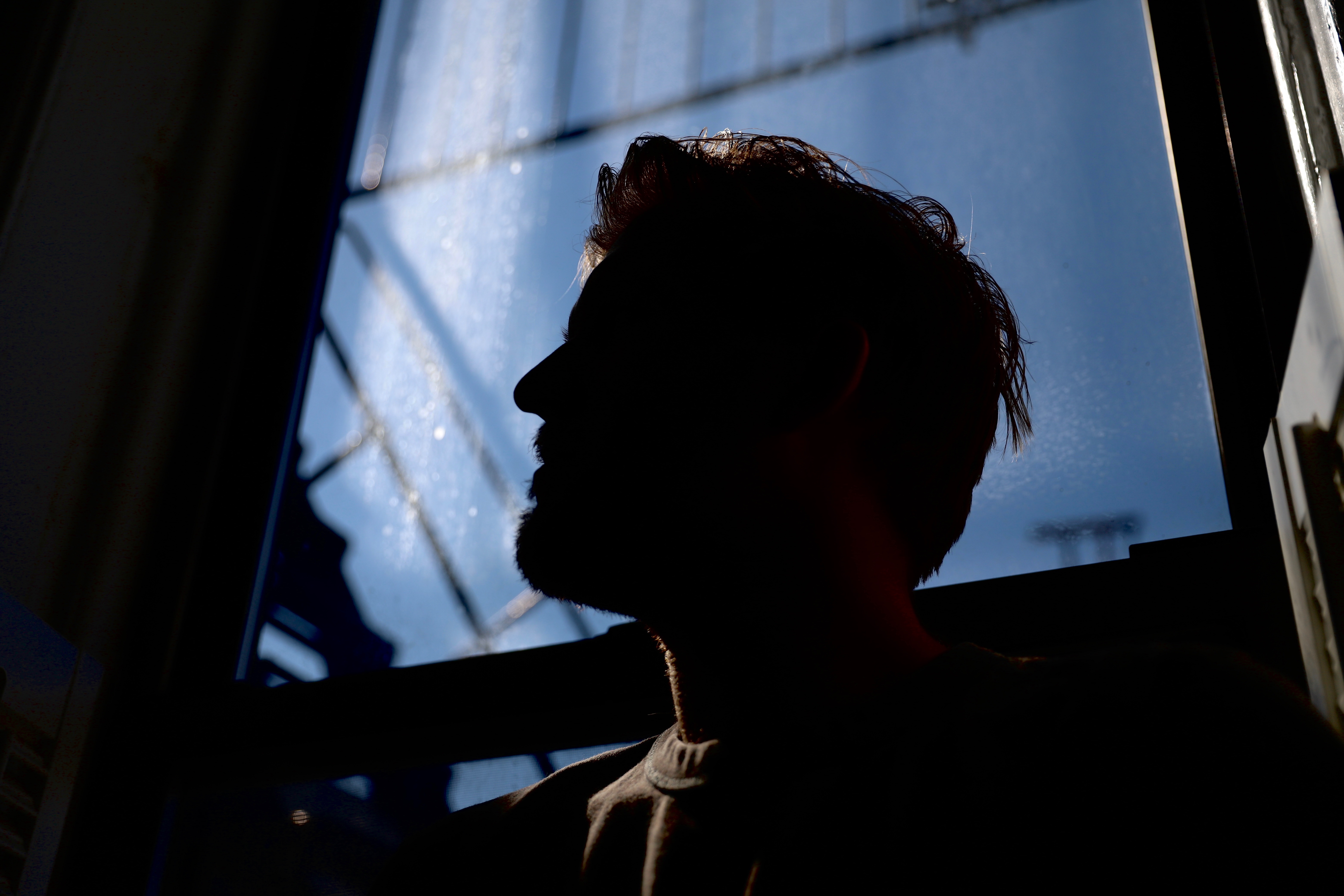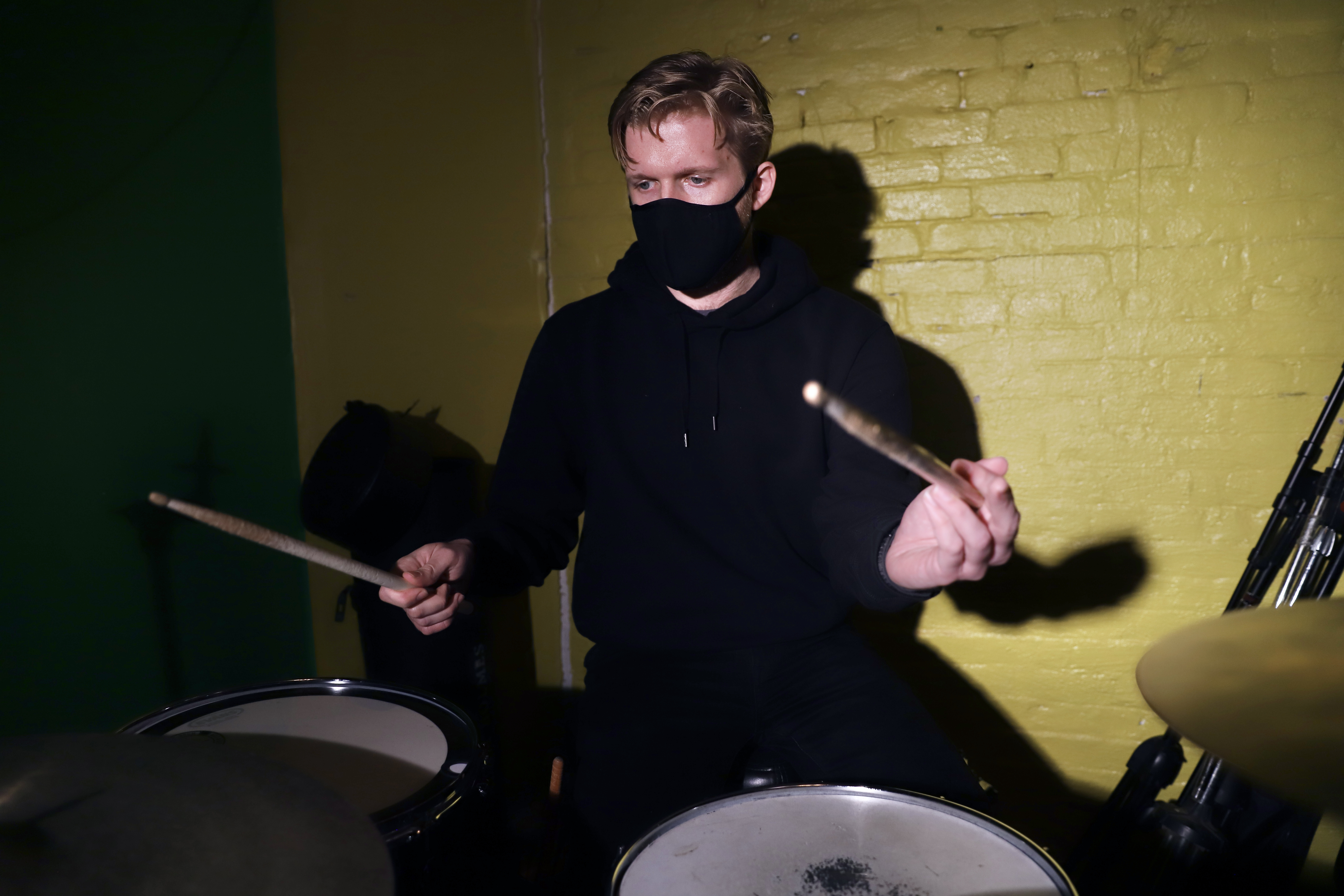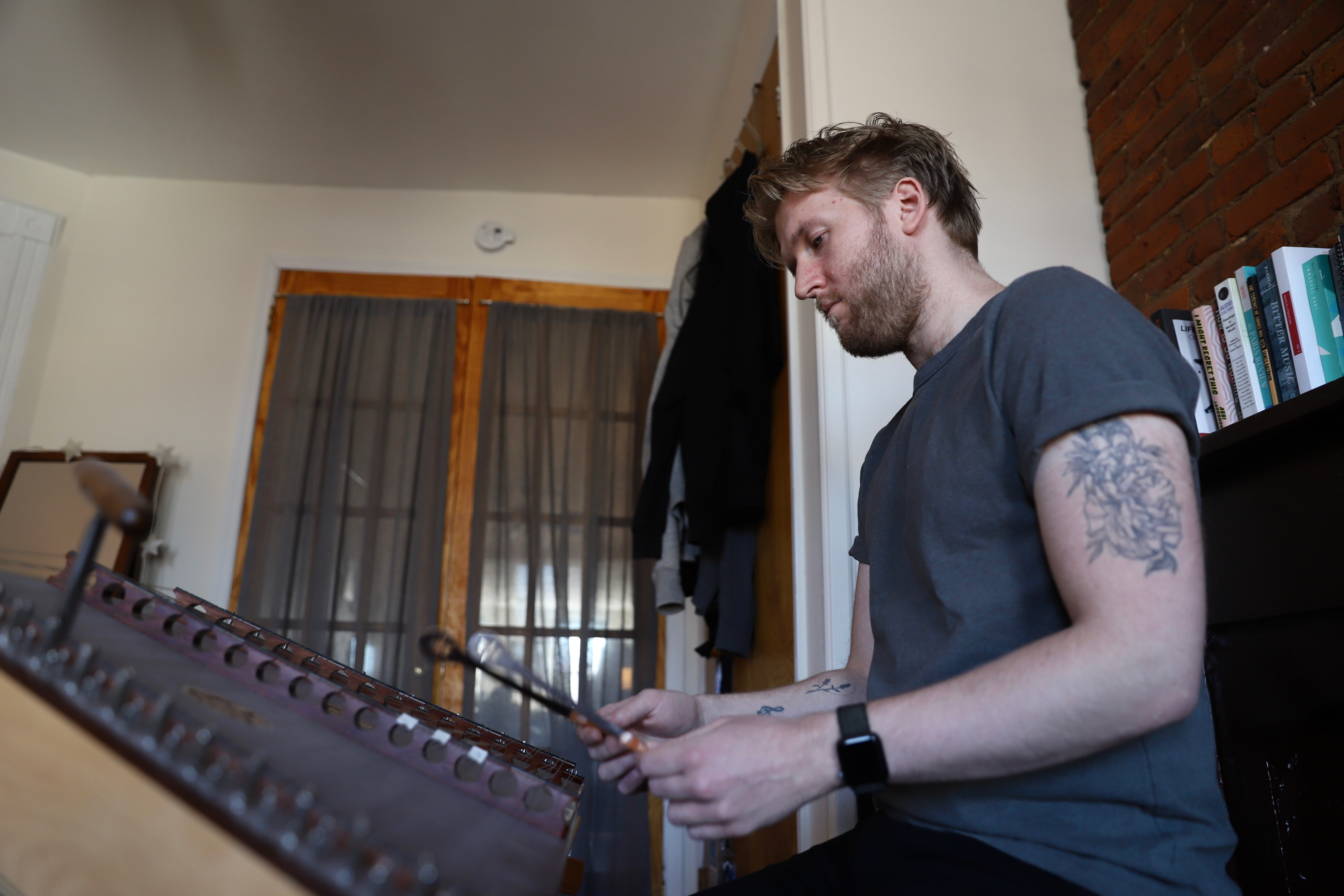

Adam Holmes is a Brooklyn-based musician. He put out his latest EP “Music for a Small Shelter” on Feb. 5, 2021. (Photo Credit: Photojournalist Cai Pigliucci)


Adam Holmes is a Brooklyn-based musician. He put out his latest EP “Music for a Small Shelter” on Feb. 5, 2021. (Photo Credit: Photojournalist Cai Pigliucci)
After many years of trial and error, in his latest EP, Adam Holmes, a Brooklyn-based musician and music teacher, finally landed on an experimental and percussion-based sound that gives a twist to the classical genre.
Holmes grew up in Lewisville, Texas where he first got his hands on a guitar when he was nine. He bashfully gives thanks to Green Day’s album “American Idiot” for starting what he thought would be a rock and roll journey, going so far as to declare to his parents at age 12 that he would “not go to college and do all that stuff.”
Holmes did end up moving to New York at 18 to attend NYU, where he fell in love with percussion instruments. Holmes let go of those rock band dreams and pursued Broadway, which turned out to not be his cup of tea, leaving him unfulfilled artistically.
“[Broadway] sounds like a punishment now,” he said. “It just wasn’t a good experience for me playing the same music night in, night out and the music was very simple.”
Now 27-years-old, Holmes lives in Gowanus with his fianceé, Cassie Wieland, a label assistant at Cantaloupe Music, and their dog Olive. He has created music that is a mix of subtle, vibrant and almost eerie, but soothing. Holmes has all the appeal of a punk rock artist, with flowy blonde hair, dozens of tattoos and classic skinny jeans. Listening to his music makes you take a second look.
Holmes has been putting out music since 2017. He worked on the song “Terminal B” with the NYU Percussion Ensemble, featured on their album Terminals Quartets. He played percussion on four other projects after that and in 2019 he released “Compartments,” on which he wrote, produced and performed.
“I feel like Adam is inherently a very curious person,” his fianceé Wieland said. “That curiosity sort of, is the thing that drives him rather than producing something or the final product.”
On Feb. 5 of this year, he released his latest EP “Music for a Small Shelter” and this is the first time he’s opened up about the process.
It includes three, seven-plus-minute-long tracks with the NYC string ensemble Desdemona. Each song was written by Holmes. The sound offers a look into well known instruments like the violin and less common ones such as the hammered dulcimer.
The hammered dulcimer brings a rich and unique sound using a trapezoidal board covered in strings. Holmes uses two small spoon-shaped mallets that gently strike the strings on the bright warm instrument, “sounding good even when mistakes are made,” he said.
“Adam’s music is spacious,” said Adrianne Munden-Dixon, a composer, teacher and violinist in Desdemona. “It was written and recorded in small spaces, but there’s a sense of expansiveness and stillness that is very freeing both as a performer and listener.”

On the right or left side of every hammered dulcimer there will be pins that are used for tuning. There are two common tunings for mountain dulcimer, DAA and DAD. In DAA, the bass string is tuned to D with the middle and paired melody strings tuned to A. In DAD, the bass string is tuned to D with the middle string tuned to A. In this tuning, however, the paired melody strings are tuned to D.
The strings of a hammered dulcimer are usually found in pairs, two strings for each note (though some instruments have three or four strings per note). Each set of strings is tuned in unison and is called a course.
It wasn’t in Holmes plan to create a new EP during the Covid-19 pandemic, but neither was teaching three-year-old kids via zoom after in-person learning ground to a halt.
“As soon as lockdown started I think every musician was like ‘damn, there’s gonna be so many like, tapes about this, and it’s gonna be so annoying,’” he said. “And then I did it on accident.”
It is for these reasons that I regard the decision last year to shift our efforts in space from low to high gear as among the most important decisions that will be made during my incumbency in the office of the Presidency.
While making his latest EP, Holmes had to adjust to teaching kids as young as three and as old as 12 how to play piano and guitar over a computer screen. Wieland wasn’t getting as much work when the pandemic hit, making Holmes’ teaching the main source of income for the pair.
“Pre-Covid there were some times where I would have really great months and more than enough by just performing,” he said. “So, having teaching to fall back on was super important, especially once things did lock down.”
Things became real for Holmes and Wieland on the day of their engagement party when the news popped up on their phones issuing stay-at-home orders.
“A couple friends who are also great musicians showed up to our party and were like ‘today we lost $4,000 in income because of gigs that were cancelled,’” Holmes said. “I lost a fair amount too, but I still had students that were going to keep money flowing. It was really rough, but I feel really lucky.”
Holmes used the events and feelings caused by the pandemic to make an EP unlike any other.
He opened up about track one on the EP, “First Names.” He explained that the pandemic has caused a sort of “social equalizer” saying that celebrity status has been wildly diminished because we are all stuck inside.
“I was trying to create something a little bit more intimate and personal in that regard to try to sort of capture that idea of everyone being on the same level and sort of a bit of solidarity,” he said.
His second song “Scattering” is about the actual meaning of the word scattering, which is when light reaches a barrier and spreads in different directions causing things like rainbows to happen. Holmes and Wieland live right by the Brooklyn-Queens Expressway and before the pandemic, there would be a little light show at certain times of the day with the cars reflecting light into their windows.
“In April when people were at their most fearful and cautious I think, the highway was empty,” he said. “You could stare at it for minutes and no cars would drive by, it was very eerie. So, that whole light show kind of stopped. Whenever a car did drive by it was like a weird sign of life.”
As a teacher, Holmes is one of 1.7 million New Yorkers who have been lucky enough to be fully vaccinated. He’s grateful that the vaccine has brought back more in-person teaching options.
“I’ve gotten the hang of it, but the first few weeks were really hard, I was like ‘this is bad,’” Holmes said. “One kid asked his dad if I was real because I started teaching him online and haven’t met him in person yet.”
Until in-person shows come back, teaching will remain his priority. Holmes is still writing, but more as a therapeutic outlet for now.
“I still tend to write almost every day, but most of those are just ideas that die in my notebook or on my computer,” he said. “Being able to make peace with that is really great.”